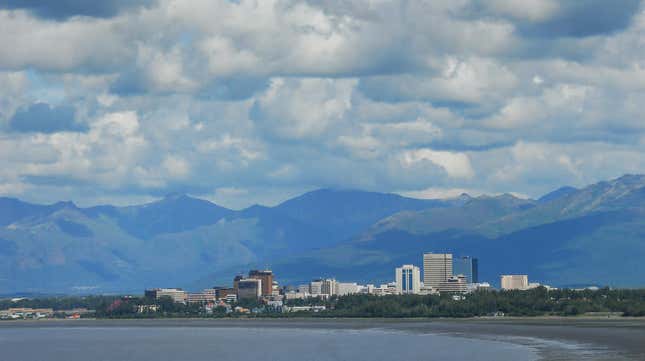
This year’s Independence Day in Anchorage, Alaska, is not one its residents will soon forget as the temperature got as high as 90 degrees Fahrenheit (32 degrees Celsius), establishing a new record for the northern city.
In a tweet put out early this morning, the National Weather Service (NWS) for Anchorage said the record breaking temperature happened at around 5:00 pm local time at Ted Stevens International Airport. The previous record for the city was 85 degrees Fahrenheit (29.4 degrees Celsius), which occurred in June 1969. The average high for Anchorage on Independence Day is 65 degrees F (18 degrees C), according to the NWS, whose records go as far back as 1954.
As the Anchorage Daily News pointed out, official temperatures used to be recorded at Merrill Field airport, which was done from 1943 to 1952. Merrill Field reached the 90 degrees mark once before, but this is “the warmest temperature ever measured in the Anchorage Bowl,” tweeted Alaskan climatologist Brian Brettschneider.
While a record for Anchorage, this is not a record for the state. In 1915, Fort Yukon in central eastern Alaska reached 100 degrees F (37.7 degrees C). More recently, McGrath hit 94 degrees F (31.6 degrees C) on June 17, 2013, according to AccuWeather.
Several other districts in Alaska set all-time or daily records on July 4th as unusually warm weather grips the state. Temperatures in both Kenai and King Salmon reached 89 degrees F (31.6 degrees C) on Thursday.
A bulletin issued by the NWS is predicting more hot weather over the coming days and into next week. Anchorage “will continue to set daily record highs into early next week,” said AccuWeather Meteorologist Ryan Adamson. The heatwave is being attributed to an oversized and stationary high pressure ridge that’s pulling in warm air from the south and preventing cool ocean air from entering inland, according to the NWS.
The previous month was the warmest June on record, featuring an average temperature of 60.5 degrees F (15.8 degrees F), which is 5.3 degrees F above average. June 2019 now represents the 16th consecutive month in which average temperatures were above normal, reports CNN.
June in Alaska was also exceptionally dry, receiving just 0.06 inches of rain—a mere 6 percent of its normal total. The dry weather prompted the state’s fire marshal to ban the sale and use of fireworks in much of Alaska.